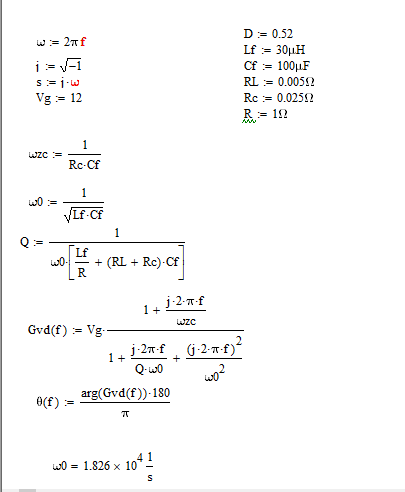I built an open-loop-controlled buck converter in Simplis. The parameters are listed below:
\$V_g=12V,V_{out}=5V\$
\$D=0.52\$
\$C=100\mu F,ESR=5m\Omega; L=30\mu H,ESR=5m\Omega\$
I use Simplis to simulate the bode plot of \$G_{v_d}\$. And I use the Mathcad to simulate the same circuit. But the result was different. During the low frequency, the peak gain margin in Simplis is less than 0db, while in the Mathcad, the gain was about 20DB.
Here are the results I got.
the circuit in Simplis
the code in Mathcad
the curve in Mathcad
I don't know what kind of mistake leads to this result. If someone knows the reason, would you please tell me? I am a freshman in Power electric and I appreciate your guidance .







